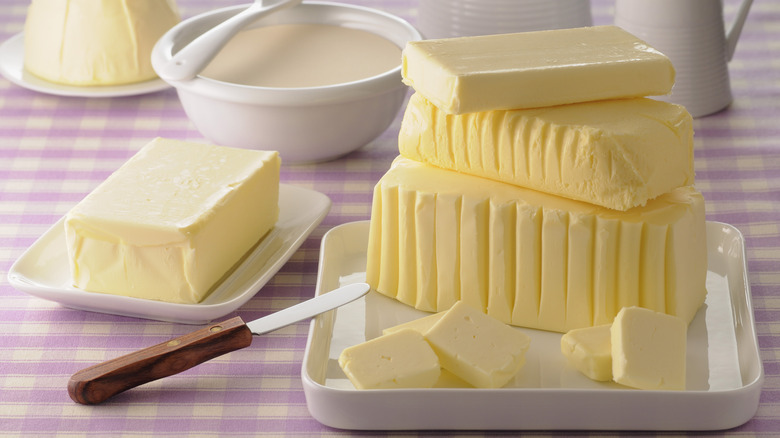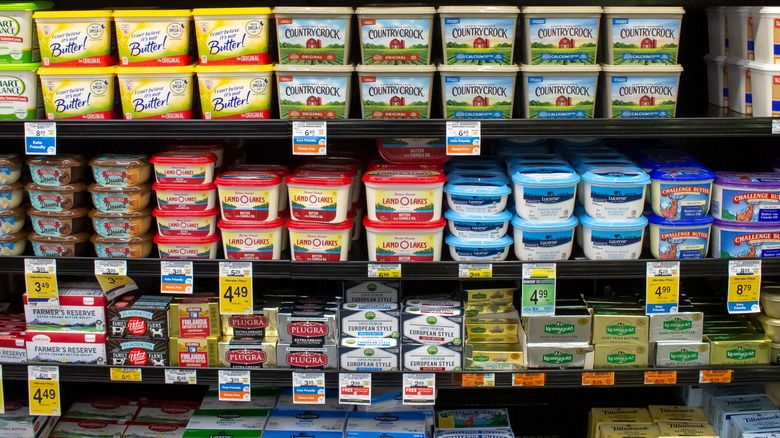Is American Or European-Style Butter More Expensive
On most American grocery store shelves, you'll often find butter advertised as "European-style" next to the standard American fare — typically with a significant markup. There's a reason that European-style butter is so costly, and no, it's not necessarily because it comes from Europe. Despite its name, "European-style" butter can be made anywhere. The term simply refers to butter with 82% butterfat instead of the 80% found in American-style butter.
This slight difference makes a big impact: the higher percentage gives European-style butter a soft, creamy texture. It's typically cultured too — a process not unlike the one that yogurt goes through — which results in a richer, butterier taste. European-style butter is pricier because it's more expensive to make butter with a higher fat percentage, and culturing the butter adds another step to the production process.
As of May 2023, a pound of butter costs, on average, $4.55, according to the Federal Reserve Bank of St. Louis. Many popular European brands sell for roughly twice as much. A pound of butter from French brand Président will set you back nearly $9, and unsalted Kerrygold Irish butter can cost more than $10 for the same amount.
Why pay more for European-style butter over American?
While you might be thinking it's always worth it to save money and opt for American-style butter, sometimes you won't be able to avoid using European-style butter. Most bakers recommend it for croissants and other laminated doughs. These pastry items tend to rely on butter for flavor, and the extra fat makes it less likely that the butter will split or crumble during the lamination process. The good news is that you can find deals on European-style butter if you look hard enough.
But keep in mind that European-style butter, while it may seem fancier and more flavorful, isn't ideal for everything. Save you money on cheaper American-style butter if you're baking something with a strong flavor that will overwhelm the subtle taste of the butter. And aside from laminated dough, the extra fat in European-style butter can make other kinds of pastries greasy and dense, while the high water content in American butter makes baked goods light and fluffy as it evaporates.

